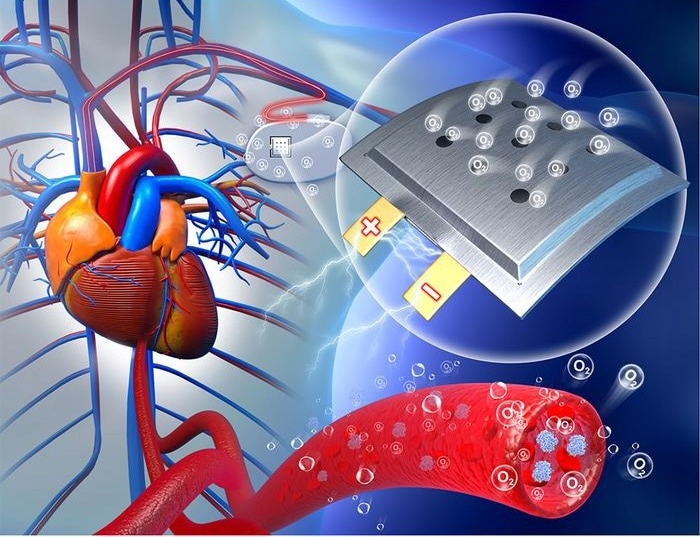Medical devices that are implanted into patients, such as pacemakers and neurostimulators, rely on batteries to maintain heartbeat and reduce pain. However, like all batteries, they eventually run out of power and need to be replaced via invasive surgery. Researchers from China developed an implanted battery that uses the body's oxygen to overcome these difficulties.
 Implantable and bio-compatible Na-O2 battery. Image Credit: Chem/Lv et al.
Implantable and bio-compatible Na-O2 battery. Image Credit: Chem/Lv et al.
The proof-of-concept design can produce consistent power in rats, according to the journal Chem. It also demonstrates that the design is compatible with the biological system.
When you think about it, oxygen is the source of our life, and if we can leverage the continuous supply of oxygen in the body, battery life would not be limited by the finite materials within conventional batteries.
Xizheng Liu, Study Corresponding Author, Department of Energy Materials and Devices, Tianjin University of Technology
The researchers created the electrodes for the battery using nanoporous gold, a substance with pores hundreds of times smaller than a hair's width, and an alloy based on sodium to create a safe and effective battery. Sodium is a common and vital element in the human body, and gold is well known for its ability to work with biological systems.
To generate electricity, the electrodes react chemically with the body's oxygen. The researchers covered the battery with a soft, flexible, porous polymer coating for protection.
After implanting the batteries beneath the skin on the rats' backs, the researchers measured the amount of electricity the battery produced.
When they checked the battery again two weeks later, they discovered it could generate steady voltages between 1.3 and 1.4 V with a maximum power density of 2.6 µW/cm2. While the output is not high enough to power medical devices, the design demonstrates that it is feasible to use the body's oxygen for energy.
The group also assessed tissue regeneration, metabolic alterations, and inflammatory responses in the vicinity of the batteries. There was no visible inflammation in the rats. Sodium ions, hydroxide ions, and tiny concentrations of hydrogen peroxide were among the byproducts of the battery's chemical processes that the body could easily metabolize and did not harm the kidneys or liver.
The rats recovered well from implantation. After four weeks, all of the hair on their backs had come back. Surprisingly, blood vessels around the batteries also started to regenerate.
We were puzzled by the unstable electricity output right after implantation, and it turned out we had to give the wound time to heal, for blood vessels to regenerate around the battery and supply oxygen before the battery could provide stable electricity. This is a surprising and interesting finding because it means that the battery can help monitor wound healing.
Xizheng Liu, Study Corresponding Author, Department of Energy Materials and Devices, Tianjin University of Technology
The team intends to investigate more energy-efficient materials for the electrodes and optimize the structure and design of the battery to increase the battery's energy delivery. Liu added that using affordable materials can further reduce the price of the battery and that it is simple to scale up production of the battery. The team's battery might be used for things other than just charging medical equipment.
Because tumor cells are sensitive to oxygen levels, implanting this oxygen-consuming battery around it may help starve cancers. It is also possible to convert the battery energy to heat to kill cancer cells, and from a new energy source to potential biotherapies, the prospects for this battery are exciting.
Xizheng Liu, Study Corresponding Author, Department of Energy Materials and Devices, Tianjin University of Technology
This research was funded by the National Key Research and Development Program of China, the National Science Fund for Distinguished Young Scholars, and the National Natural Science Foundation of China.
Journal Reference:
Lv, Y., et al. (2024) Implantable and bio-compatible Na-O2 battery. Chem. doi.org/10.1016/j.chempr.2024.02.012